Natural living series
Growing our own food is as important as building our own home.
With the Green Revolution of the 1960s, we are still intaking food, that is slowly poisoning us. There are many positive changes happening around India, where farmers are shifting back to their traditional roots and pursuing Natural living ways. However, Pure food, Natural buildings and Organic clothing are still distant for many.
With more than ten years into Natural living, most of Thannal’s time and effort is spent in spreading Natural Building Awareness. It’s time to take steps in addressing other areas of Natural Living as well. We are attempting to create a model farm that aims to create natural farming awareness among our local village farmers. Awareness in the forms of sowing native seeds, applying traditional farming methods, selling diverse varieties locally, creating a direct farmer market can go a long way in questioning the current Food Industry.
Importantly, Natural Building and Natural Farming cannot be seen as two separate entities, rather ones that are integrated closely. Farmers starting to grow the admixtures, they need for Natural Building in their farms has been a long-term vision of Thannal. With 35 cents of Farmland on our Campus, we have begun the necessary works for such an integrated model of Thannal Natural Building Grove (TNBG).
For a farm to function well, it’s ideal that it borrows some characteristics of the forest. Our farm is designed to be an extension of the forest. Trees being an integral part of the living fence, forest and taste-forest, they are equally significant as the crops. Developing a forest that can survive in any situation interdependently as “Forest-Taste Forest-Crops” is our objective.
For all the problems that the Green revolution has brought us, we have the solution right under our feet. Soil! Creating a living, fertile soil is the key to kickstart natural way farming. In a village of mostly monoculture crops, our purpose is to increase Bio-diversity and introduce multi-cropping systems. With time and the right agricultural practices, we would decrease input costs, increase yield and the only major work would be harvesting. To revive our land for such a model, we are starting with Land preparatory methods.
The history of the organic farming movement in Tamilnadu was sowed by Nammalvar, who had dedicated his life to traditional, natural farming. His like-minded followers are taking forward this righteousness through organizations like Vanagam and Semmai Vanam. Taking blessings from Nammalvar ayya, Pamayan ayya, Senthamizhan anna and…, we’re starting on this venture, to encourage more people towards Natural Living. As a student of farming at Marudam Farm School, I take responsibility for sharing their objectives and following their paths to a common vision.
From our Thannal project of Community Seed Bank, I am thankful to Pradeep Anna (Rangamalai Organic Farms) for introducing me to his knowledge on native seeds and farming methods. I’m thankful to Chithambararaaja Anna, who is our Natural Farming Consultant, who has planned and designed our farm and continuously shares his methods and knowledge of natural farming. The works in our 35-cent farm are undertaken by us in Thannal and our neighbouring farmers and shepherds, who eagerly learn this way of farming.
Arunachala mountain
Tiruvannamalai’s Water Management System is one of the best in India. The hill allows for Natural recharge and flow of rainwater. The rainwater streams down from the mountain and fills innumerable Tanks, Ponds and Theerthams around its foothills. Through Canals, Water flows to the Ponds and ultimately to the irrigation tanks in the plains. All along the way, it recharges the groundwater table.
Our site is adjacent to the bank of the pond from where we source our water. Effective Water management within our site will affect the water table in the Pond. Such work on a small scale in each site has the power to create a big impact on the Water Table in the whole of Tiruvannamalai.
Planning
The 35-cent farmland is segmented into different areas on site. Vegetable crop beds are planned for 4.5 cents and Rice or Millet area is left for 4.5 cents. There are two layers of trees to include diverse insects and snakes – Forest and Taste Forest for 9 cents. (Refer to the video for a tour of the farm). Orange and Green lines indicate the two layers of the Living fence, yet to be planned. Other segments of the remaining 17 cents will be explained in the coming articles.
History of our land – Water planning
We shifted to the current land in 2015, where we have built our Earth-bag home and are set to explore in growing our food. This soil had undergone inorganic farming for many years, which we are slowly trying to revive through natural methods. Our adjacent farmers practice inorganic farming, with frequent use of pesticides and fertilizers. Root plants like Vettivaer, Nannari are planted along the fence, as they thrive in polluted environments and are capable of digesting man-made poisons that might be passing onto our land.
Do you want to study Natural Building Online ?
Our site in Tiruvannamalai is drought-prone. Our present soil condition indicates a lack of moisture, and hence Rainwater harvesting, and water table management is of critical importance in our land. First and foremost, we analyzed the contours and the natural slope of our land. We planned the water in such a way that it fully fills into our water sources and only then the excess water would flow out of the site. The area at a higher slope is hence planned as a forest area so that water is absorbed into the ground by the roots and released slowly. Rainwater recharge pits of 15’x4’ are dug strategically to collect the flowing rainwater. The pits are filled with cocopeat to hold and retain the water inside. This step will have a huge impact on the underground water table in the coming years.
Apart from recharging measures to conserve water, we have successfully built a Grey Water Treatment tank using pure Natural Methods of Lime and Surkhi using the Thappi plastering technique. The water from the kitchen sinks and bathroom is collected and treated using Natural Methods -like Lime Aggregate filtration, Brickbat and gravel filtration, Sedimentation, Alum filtration and using Filtering Root plants like Canna and Heliconium.
Living Soil
The soil condition was tested by simple examination of its moisture, texture, smell, bio-carbon tone and the type of plant and grass species found in the land. Though the soil has ample micro-organisms, it needs more enriching through natural processes. The objective is to create enriched, living soil with a huge number of microbes and earthworms. Since we are initially preparing our land, we are cultivating green manure plants in the 9 cents of vegetable beds and rice area. Once these plants are mature, they will be harvested and put back to the soil, forming enriched manure.
Do you want to study Natural Building Online ?
Vegetable Beds –
After ploughing our land, 4.5 cent segment land was planned to make beds for vegetable crops and 4.5 cent for Rice or Millets(Refer to Plan). Two kinds of bed making system were explored- Irumadi Pathi (Raised beds) and Palla Pathi(Sunken beds).
In Irumadi Pathi, we attempted a sandwich bed system where organic matters like sticks, dried leaves are sandwiched in between layers of loose soil. This bed has microorganisms growing from both top and bottom of the organic matter. Such 2’ deep loose soil will make sure that roots dig deeper and promotes good growth.
In Palla Pathi, the soil beneath the top soil is removed off and all the soil are loosened. This results in a bed that is short of height that will protect the plants from being affected by strong winds.
Paladhaniya Vidhaipu (Green Manuring Method) –
Paladhaniya Vidhaipu – is a Soil Preparatory, green manuring method of sowing different leguminous varieties of Pulses, Millets, Oilseeds and Spices together at once. Manure crops of Saamai(Little Millet), Thinai(Foxtail Millet), Ellu(Sesame), Kollu(Horse gram), Kadugu(Mustard), Aamanaku(Castor), Sanappu(Sunhemp), Thakapoondu(Sesbania aculeata), Ulundhu(Urud), Pasipayaru(Greengram), Thattapayiru(Cow eyed peas), Karamani(Black eyed peas), Jeeragam(Jeera), Vendhayam(Fenugreek), Kadala(Groundnut), Kolunji(Nigella Seeds), Sencholam(Wild Sorghum) were all mixed together and sowed.
Manure crops of Sanappu (Sunhemp), Thakapoondu(Sesbania aculeata), Avuri (True Indigo), Kozhinji (Tephrosia purpurea), Millets of Kambhu (Pearl millet), Saamai (Little Millet), Thinai(Foxtail Millet), Sencholam(Wild Sorghum),Lentils of Ulundhu(Urud), Pasipayaru(Greengram), Thattapayiru(Cow eyed peas), Karamani(Black eyed peas), Kollu(Horse gram), Oil seeds of Ellu(Sesame), Kadugu(Mustard), Aamanaku(Castor),Kadala(Groundnut), Spices of Jeeragam(Jeera), Vendhayam(Fenugreek) were all mixed together and sowed.
The plants will be left to grow till they start to flower and mature. When these are grown, each plant passes on different energies to the bed that it has absorbed from space. The soil is covered by dense plants such that sun rays do not meet the soil directly for a month. This will improve the soil condition and increase moisture content. When such plants are cut and given back to the soil, the microbial content and fertility increase the main fold.
Forest – Taste forest –
Dense trees are planned in the South and West of our land to ensure that the crop fields are not shaded. In order to sow tree saplings, we dug circular pits, loosened the soil and filled them with Mulch. Such Mulch helps increasing Microbe content in the soil. In Coconut shells filled with fertile soil and cow dung, we sowed the tree seeds which when grown to one foot high, will be transplanted in position to the Forest or the Taste forest. In common to three or four trees, fertilizer pits are dug. The watering for the trees will be done in these pits for the water to be absorbed by the deep roots
Here, Trees which will welcome Bio-diversity and come of use for Food, Building, Clothes, Medicines and much more purposes will soon be planted
Conclusion –
With the boundaries between Natural Building and Natural farming getting blurred, we are attempting to constantly learn, enjoy and spread Natural living. Starting successfully with land preparation, we are proceeding to collect seeds for our Forest as well as Vegetable crops. We are eagerly looking forward to documenting our next steps in our farmland.
This post is the first of its series in Thannal Natural Building Grove (TNBG).
Our Natural Farming Consultant: Chithambararaaja – Contact – mailtoraaja [@]gmail.com

Adhya Vriksha
This article is by Adhya Vriksha. This post is part of our Thannal News series.


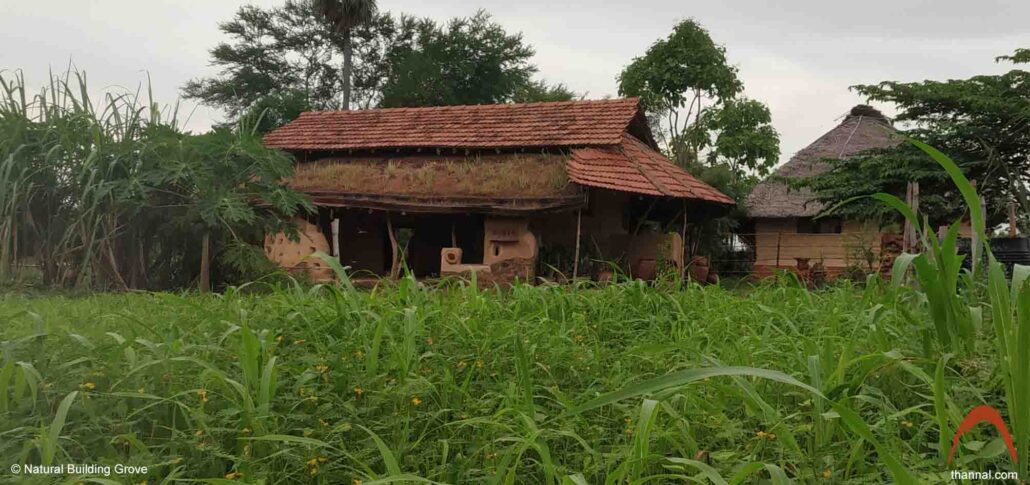
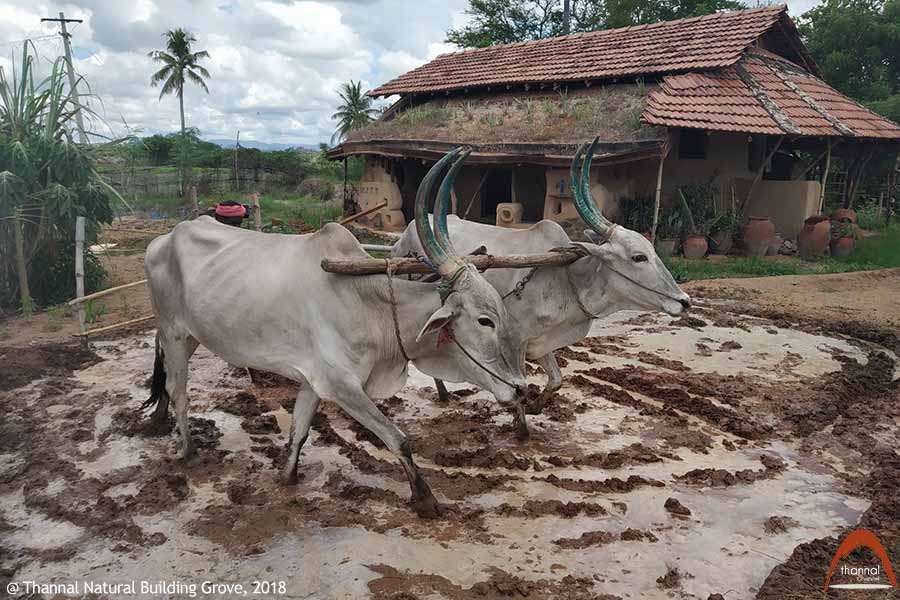


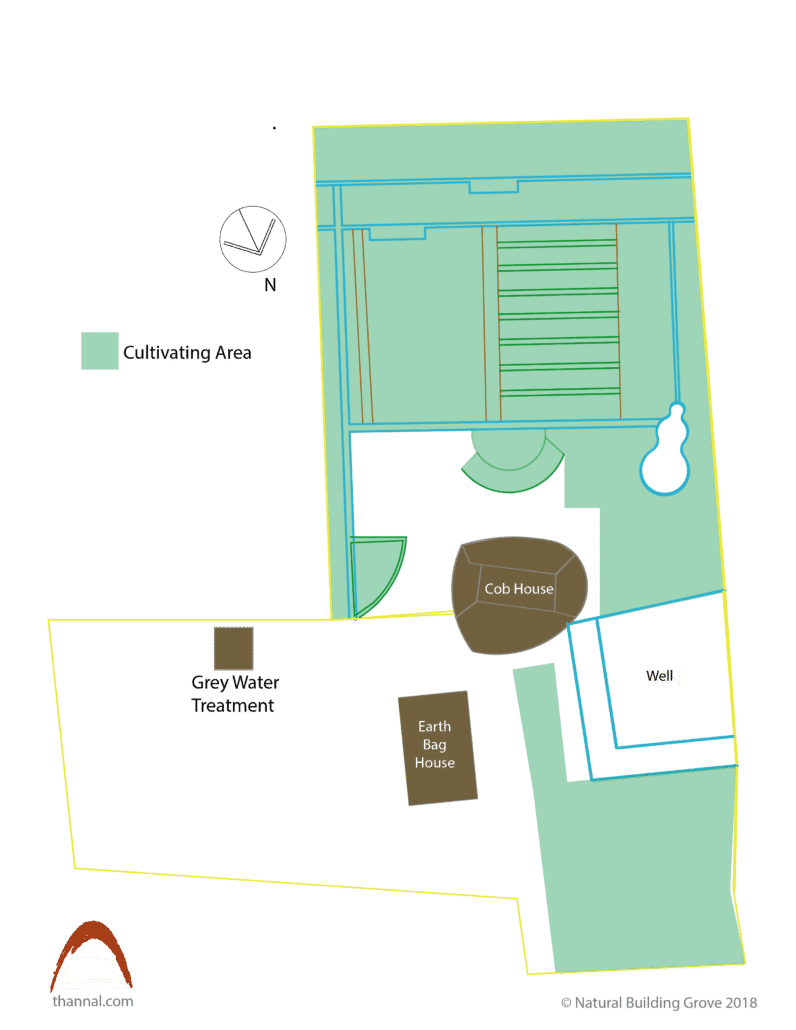
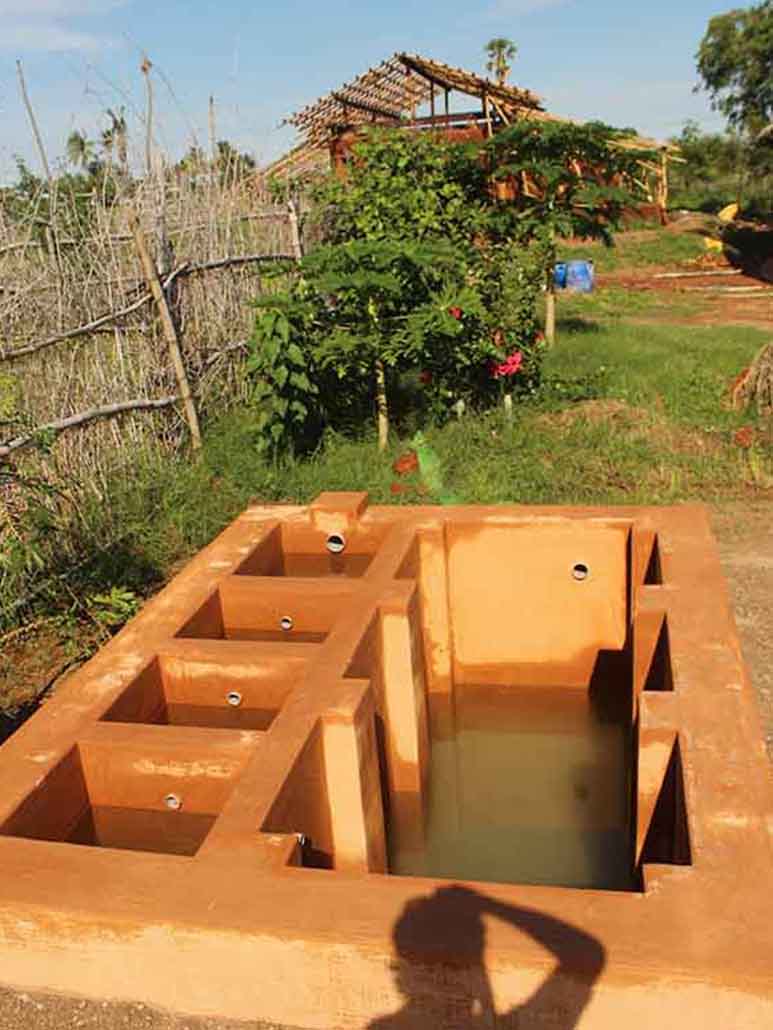


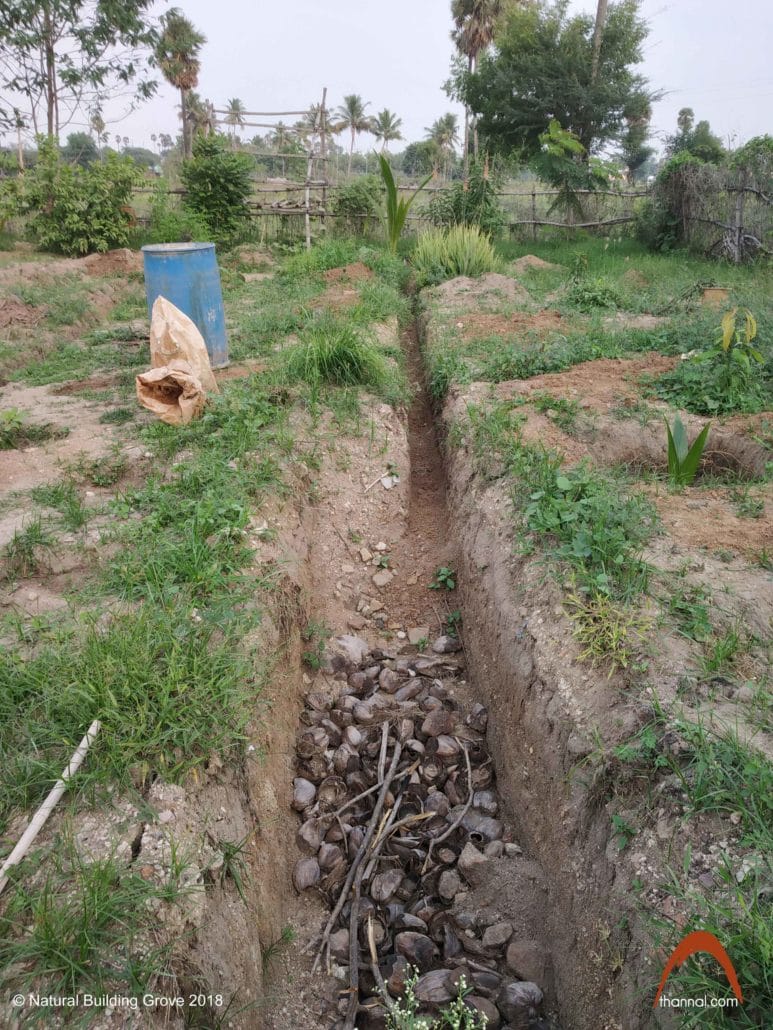
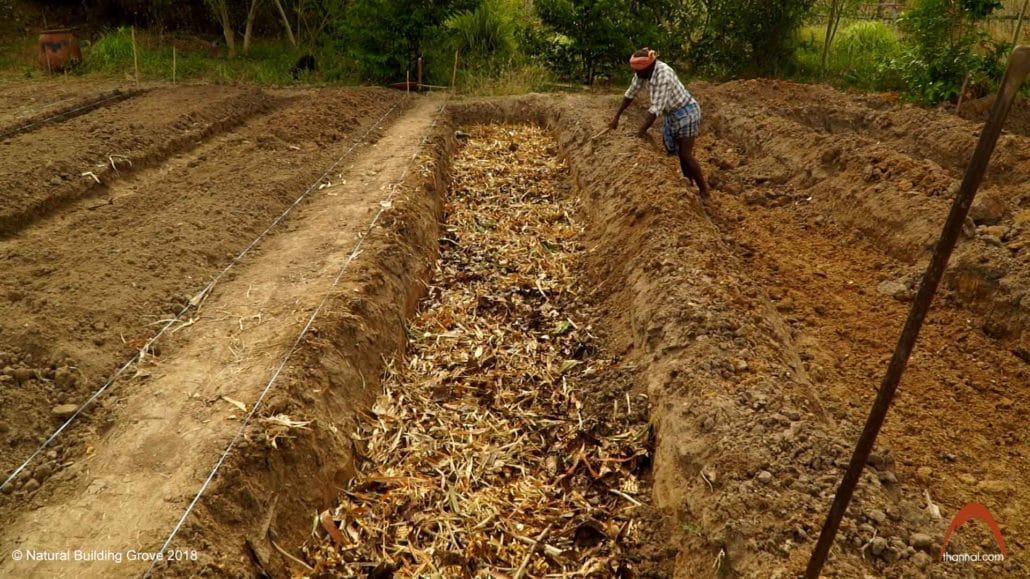
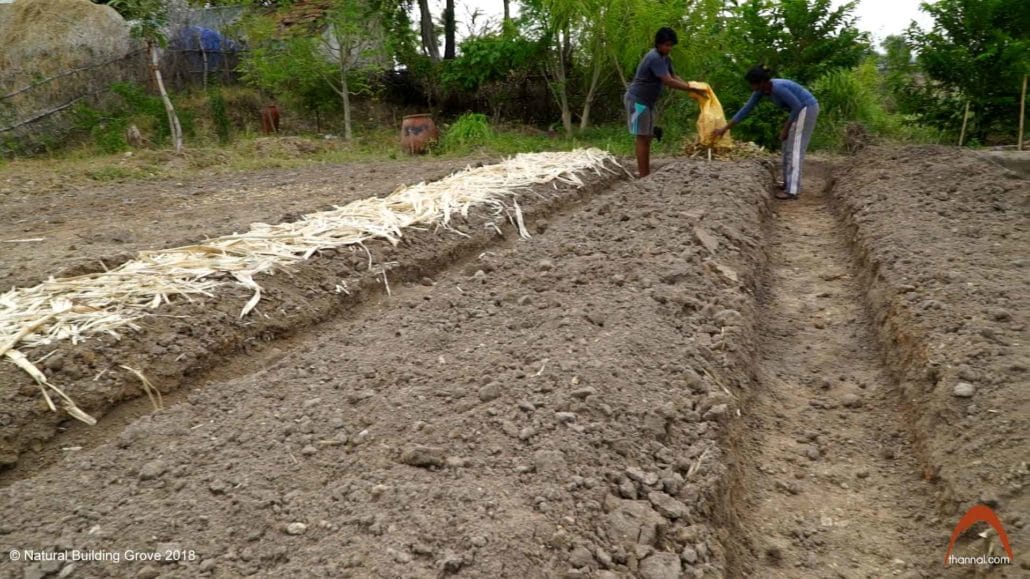
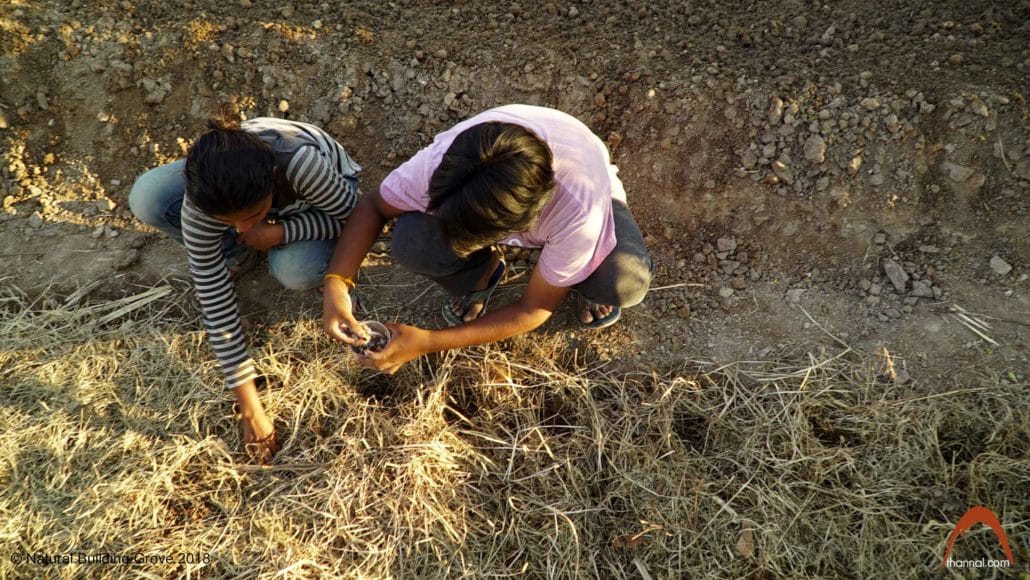


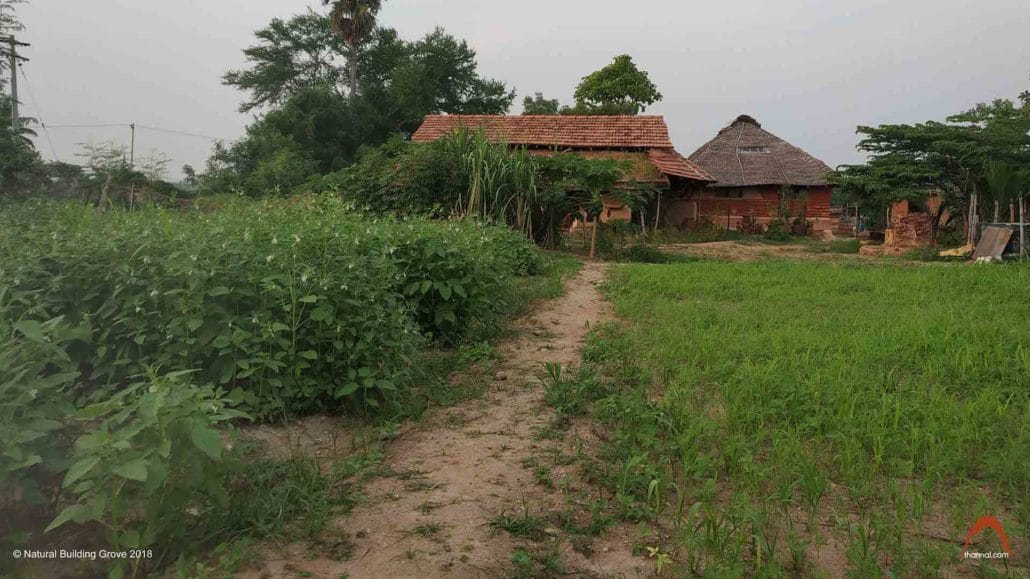
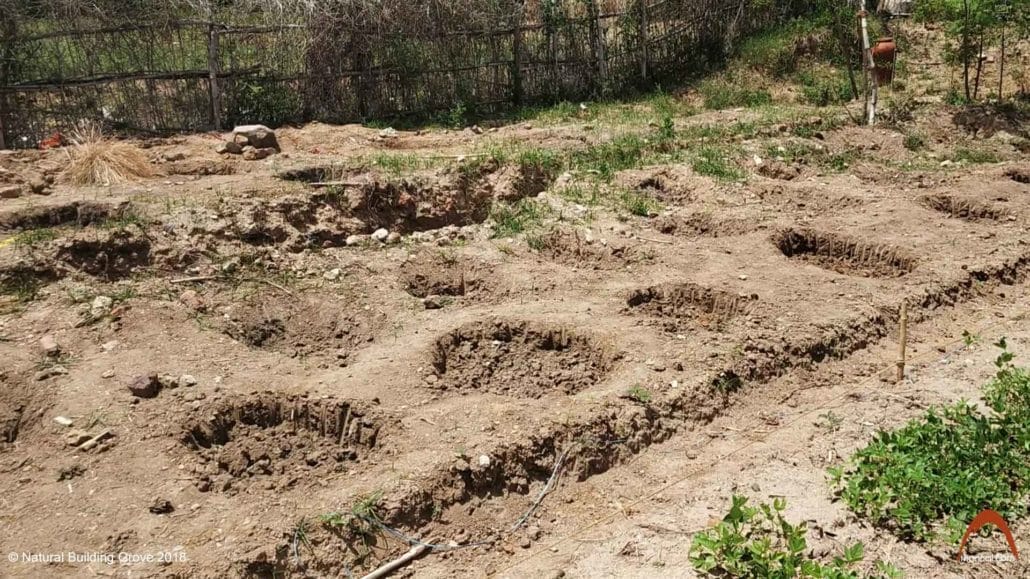
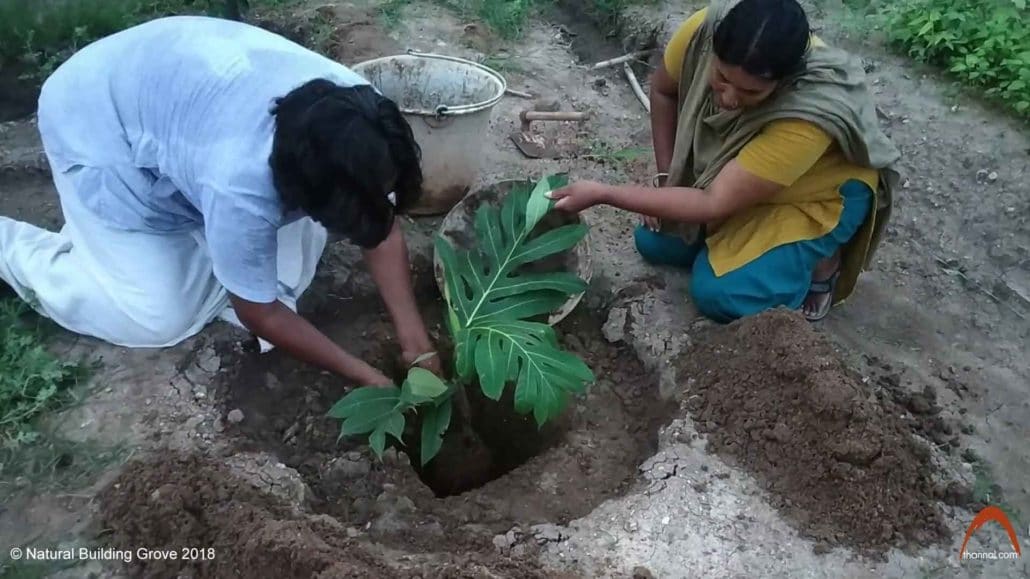
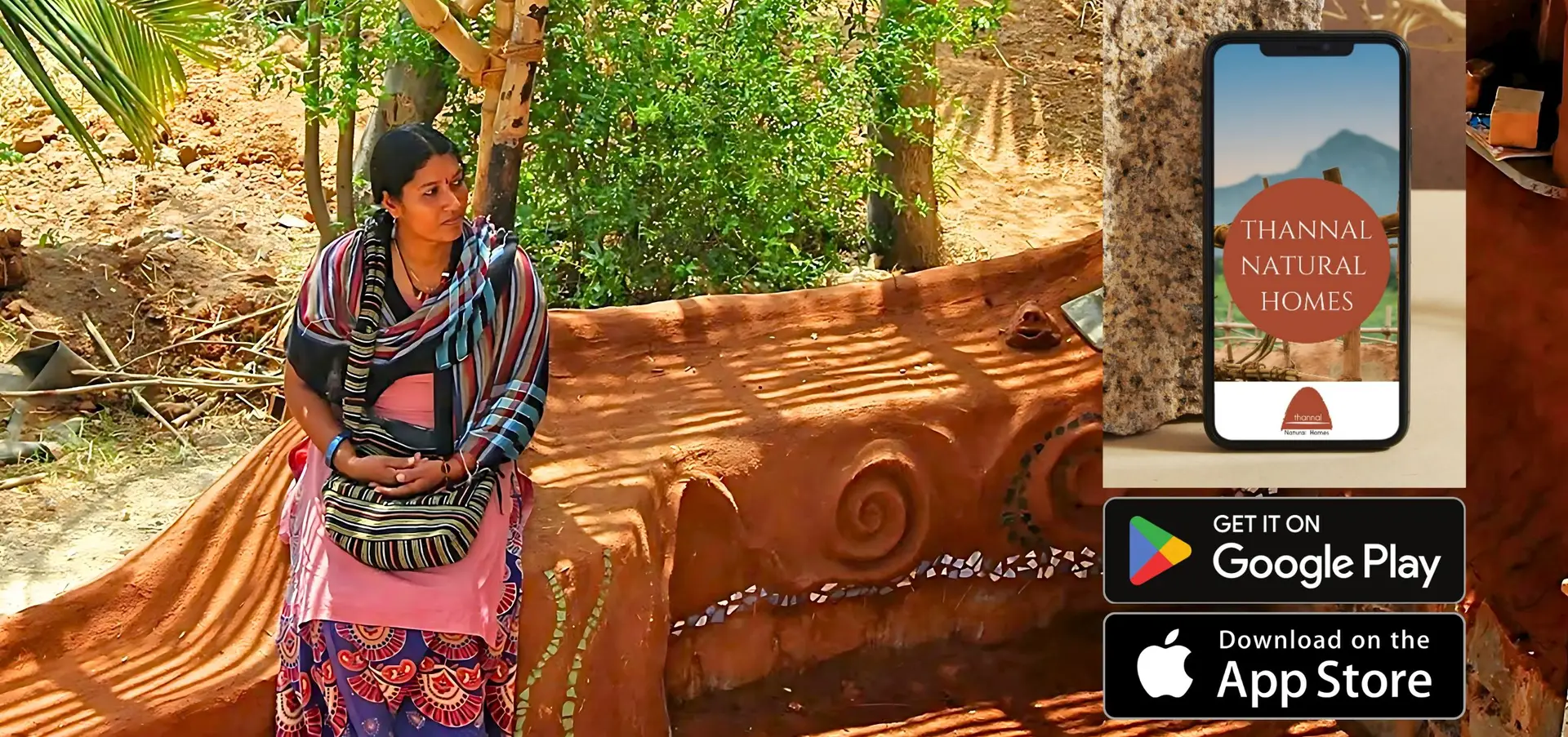
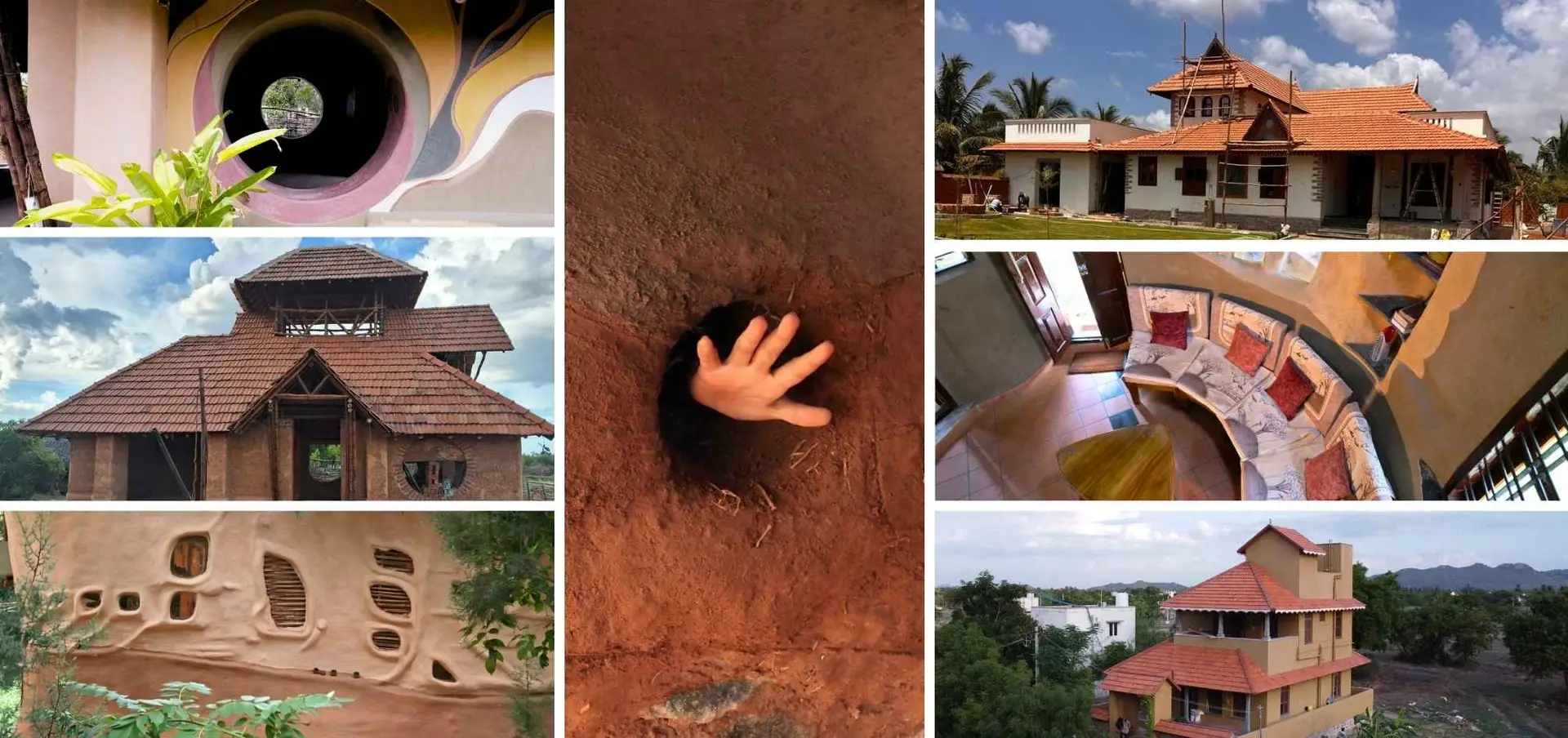
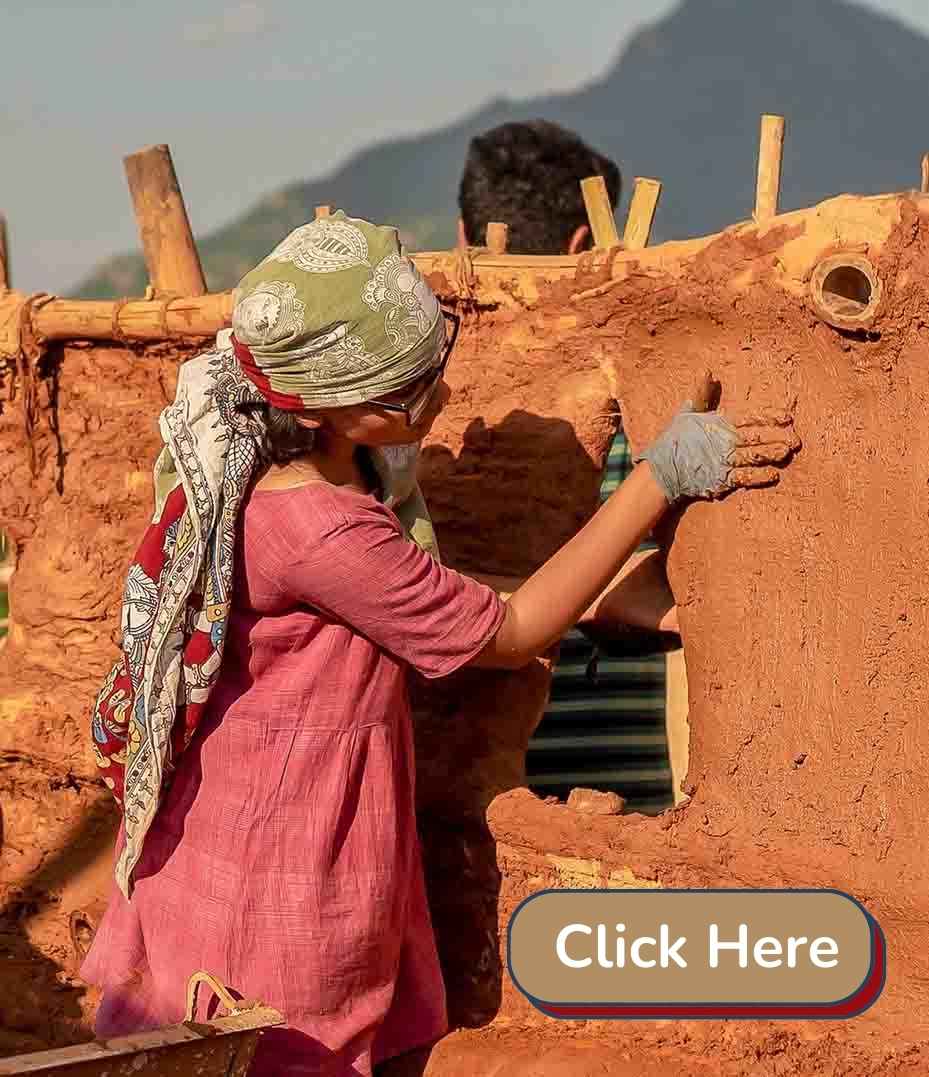

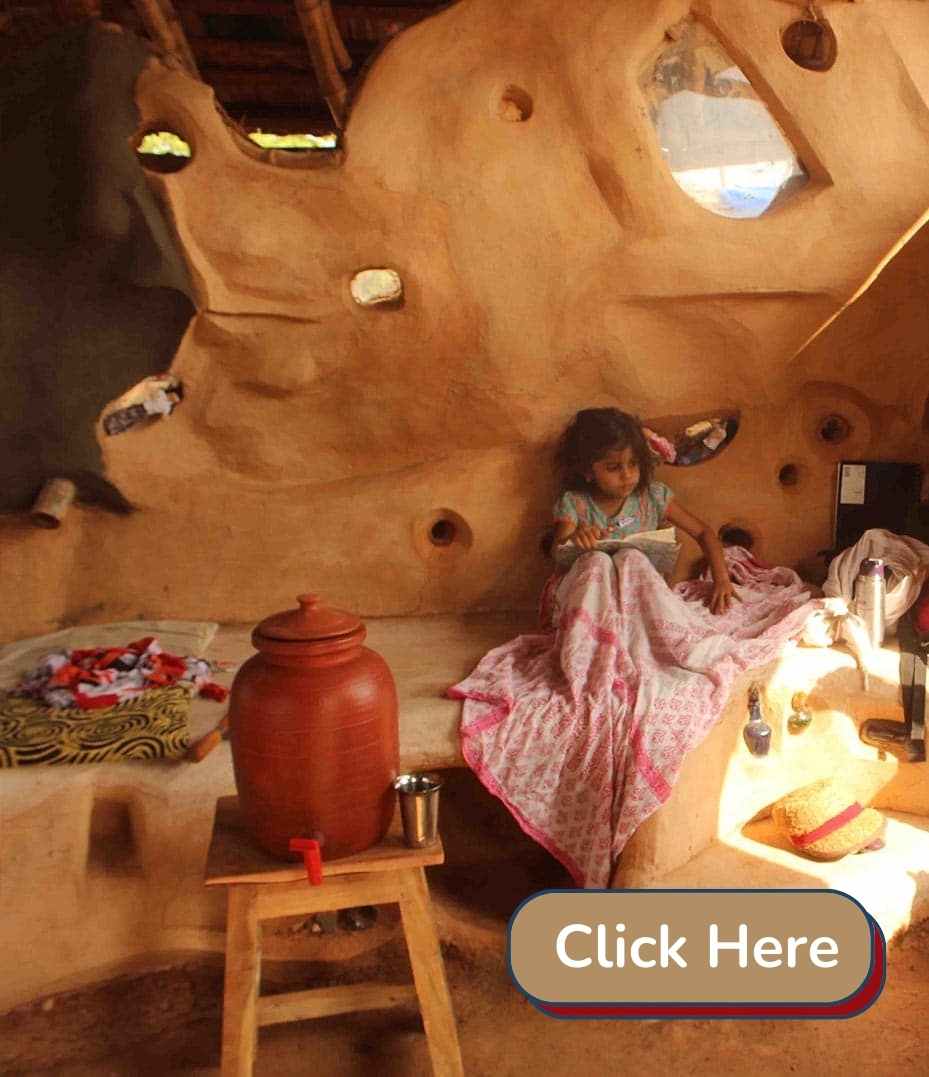

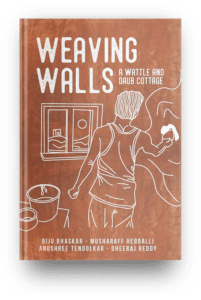
2 thoughts on “Part 1 Thannal Natural Building Grove”
Thankyou Bala
Wonderfully documented…. thank you for sharing this!